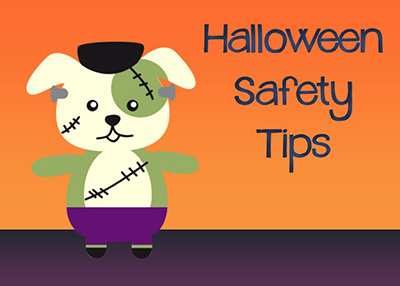Halloween Safety Tips
The Houston Humane Society is offering the following tips to help pet owners have a happy, healthy, and humane Halloween this year.
- If you plan to hand out candy this season, be sure your dog or cat is secure (in a crate or another room). Many pets escape through frequently opened doors!
- Be sure all pets are wearing collars with ID tags. Many of us leave collars and tags off from time to time, but this time of year it is imperative you don’t forget to put their identification on them. Constant doorbell ringing, frequent visitors, and disruption in their normal routine can spook even the most well-adjusted pet. If your pet does dart out, you want to make sure they have their ID!
- Jack O’ Lanterns are fun and festive, but watch those candles. A darting cat or dog can accidentally tip them over and create a fire hazard! Consider switching to battery operated tea lights this year.
- Costumes! We love ‘em, but make sure the costume is not restrictive or overly stressful to your pet. Costumes should be loose enough around the neck and ribcage so as not to restrict breathing. Be careful of anything that dangles which could cause a choke hazard.
- Keep candy out of your pet’s reach. Many types of candy and chocolate can be harmful to pets. The darker the chocolate, the worse it will be for your pet. And candy wrappers can easily cause a choking hazard.
- If you fear your pet has ingested candy, take the following steps:
- Get the candy and wrappers away from your pet immediately.
- Assess the situation and try to determine how much your pet ingested.
- Read the ingredient list to know what your pet ate (chocolate, raisins, and artificial sweeteners like xylitol can cause severe problems)
- Call the emergency line for your vet and ask for a recommendation. If that isn’t available, contact a local emergency clinic and let them know the ingredients and amount your pet ingested.
- Monitor your pet for signs of distress: vomiting, diarrhea, drinking excessive water, refusing to eat or drink, becoming lethargic.
- Monitor your pet over the course of several days, not just a few hours. Secondary issues can arise such as pancreatitis or intestinal blockage.
- Play it safe and get a checkup with your vet ASAP if you see any signs of abnormal behavior.


